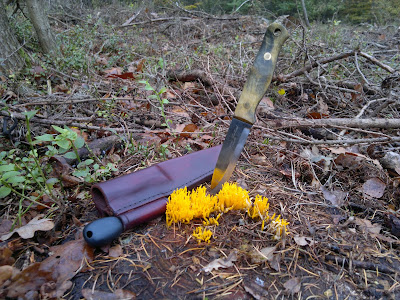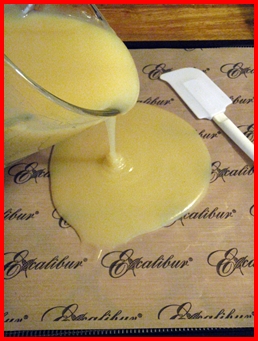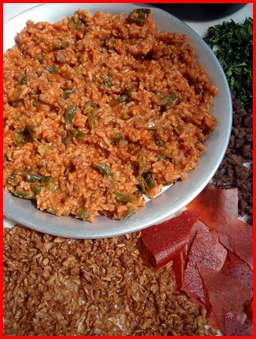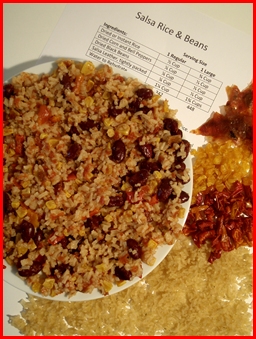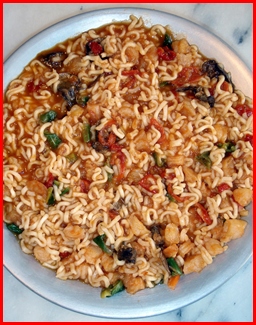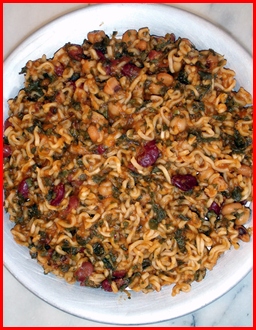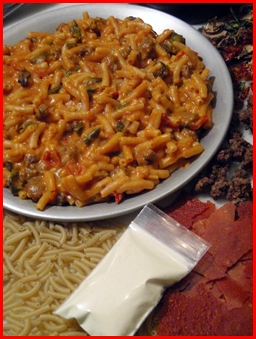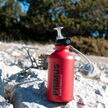Wandelen Jotunheimen Noorwegen
Korte feiten over wandelen in Jotunheimen
Gebied: Jotunheimen
(Zuid-Noorwegen) is het hoogste gebergte van
Noorwegen.Tocht(en): Besseggen
graatwandeling en beklimming Galdhøpiggen (2469 m), de twee
populairste wandelingen van Noorwegen.Navigeren: Markering
+ wandelkaart.Beste
seizoen: Midden
juni tot midden september.Overnachten: Berghutten.
Wildkamperen kan ook.
Gedetailleerde
informatie
Over
JotunheimenJotunheimen
(Zuid-Noorwegen, drie uur rijden boven Oslo) is het hoogste gebergte
van Noorwegen. Hier vind je de meeste toppen boven de 2000 meter van
Noord-Europa. Het gebied is woest, rotsig en stil (buiten het
hoogseizoen kom je er bijna niemand tegen). Jotunheimen (letterlijk
huis van de reuzen) is een nationaal park. Je vindt hier de mooiste
flora van Noorwegen en als je geluk hebt, kun je hier de veelvraat,
lynx en eland spotten.
De
twee tochten:
Besseggen graat + beklimming Galdhøpiggen
Besseggen:You’ll
never walk aloneDuur:
6-7 uur
Moeilijkheidsgraad: gemiddeld, stijging 760 m. De graat is steil en vergt enig klauterwerk, ook moet je geen last van hoogtevrees hebben.
Moeilijkheidsgraad: gemiddeld, stijging 760 m. De graat is steil en vergt enig klauterwerk, ook moet je geen last van hoogtevrees hebben.
Galdhøpiggen
(2469 m): Het
dak van Noord-EuropaDuur:
6 uur
Moeilijkheidsgraad: gemiddeld (met gids over gletsjer, 600 m stijgen)
Moeilijkheidsgraad: gemiddeld (met gids over gletsjer, 600 m stijgen)
Besseggen
en Galdhøpiggen zijn de populairste wandelingen van Noorwegen.
Vooral op de Besseggen graat wil het wel eens druk zijn. In
Jotunheimen zijn genoeg ‘stillere’ alternatieven.
Alternatief
Besseggen:
Bukkelaegret. De tocht is 10 km lang, duurt ongeveer 5 tot 6 uur,
kent een stijging van 400 m en heeft een pittige afdaling op het eind
(als je loopt vanuit Memurubu richting Gjendebu). De uitzichten zijn,
eerlijk is eerlijk, minder spectaculair, maar je kunt er wel in je
eentje van genieten. Meer informatie vind je bij Den Norske
Turistforening (DNT), www.turistforeningen.no.
Alternatief Galdhøpiggen:
start vanuit de hut Spiterstulen (9 uur heen en terug, stijging
1400m). Lange, maar prachtige klim over hoofdzakelijk steen- en
rotsvelden. Onder de top enkele sneeuwvelden, maar je kunt in goed
weer zonder gids omhoog. Onderweg pak je ook nog de toppen mee van de
Svellnosi (2272m) en Keilhaus (2355m). Meer informatie
via www.spiterstulen.no.
NavigerenZowel
de Besseggen als Galdhøpiggen zijn voorzien van de rode ‘T’,
uitgezet door Den Norske Turistforening , DNT. Toch is het altijd
raadzaam om een goede kaart bij je te hebben in dit gebied, zie ook
Kaarten en gidsen.
Beste seizoen en geldHet ‘wandelseizoen’ in Jotunheimen loopt van midden juni tot midden september. Ook de hutten hanteren deze openingsmaanden. In Noorwegen betaal je met de Noorse Kroon, 1 nkr = € 0,13 (info dateert van februari 2013).
Beste seizoen en geldHet ‘wandelseizoen’ in Jotunheimen loopt van midden juni tot midden september. Ook de hutten hanteren deze openingsmaanden. In Noorwegen betaal je met de Noorse Kroon, 1 nkr = € 0,13 (info dateert van februari 2013).
OvernachtenDe
meeste mensen die aankomen bij Besseggen slapen de eerste nacht
inGjendesheim,
het vlaggenschip van de DNT hutten (gjendesheim.turistforeningen.no)
aan het Gjendemeer. Wij zijn daarna per boot naar Memerubu gevaren
(kijk voor vaarschema en prijzen op www.gjende.no)
en maakten vanuit daar de dagtocht over Bukkelaegret (zonder onze
bagage) om weer per boot vanuit Gjendebu terug te varen
naar Memerubu(www.memurubu.no,
geen DNT hut). Maar je kunt natuurlijk ook kiezen voor een
overnachting in Gjendebu (www.gjendebu.com).
Prijzen en slaapmogelijkheden van de DNT hutten zijn te vinden
via www.turistforeningen.no
Voor de beklimming van de Galdhøpiggen sliepen wij in Spiterstulen(www.spiterstulen.no), 2- pk vanaf € 45 per persoon per nacht (excl ontbijt).
Wildkamperen kan natuurlijk ook (ook bij de verschillende hutten).
Voor de beklimming van de Galdhøpiggen sliepen wij in Spiterstulen(www.spiterstulen.no), 2- pk vanaf € 45 per persoon per nacht (excl ontbijt).
Wildkamperen kan natuurlijk ook (ook bij de verschillende hutten).
Vervoer
naar Jotunheimen
Auto: Jotunheimen (Gjendesheim berghut) ligt op 1655 km van Utrecht. Je kunt met de boot over vanuit Kiel of Frederikshaven (bijvoorbeeld met Stena Linewww.stenaline.nl of Colorline, www.colorline.com)Vliegtuig – KLM vliegt dagelijks op Oslo (retour vanaf € 146), lowcoster Norwegian air vliegt 6 x per week tussen Amsterdam en Oslo (direct of via Kopenhagen), retour vanaf € 100Bus en trein – vanuit Oslo rijden er meerder malen per dag bussen en treinen richting Otta. Vanuit daar kun je met regionale bussen naar Gjendesheim rijden. Express bus Oslo, www.nor-way.no. Trein (mooie rit en comfortabel, stopt ook bij vliegveld Oslo), www.nsb.no. Retour vanaf € 130, soms goede aanbiedingen afhankelijk van seizoen. Regionale bussen naar plaatsen in berggebieden (eind juni tot eind augustus), www.jvb.no.
Meer informatie vind je op www.visitnorway.com
Auto: Jotunheimen (Gjendesheim berghut) ligt op 1655 km van Utrecht. Je kunt met de boot over vanuit Kiel of Frederikshaven (bijvoorbeeld met Stena Linewww.stenaline.nl of Colorline, www.colorline.com)Vliegtuig – KLM vliegt dagelijks op Oslo (retour vanaf € 146), lowcoster Norwegian air vliegt 6 x per week tussen Amsterdam en Oslo (direct of via Kopenhagen), retour vanaf € 100Bus en trein – vanuit Oslo rijden er meerder malen per dag bussen en treinen richting Otta. Vanuit daar kun je met regionale bussen naar Gjendesheim rijden. Express bus Oslo, www.nor-way.no. Trein (mooie rit en comfortabel, stopt ook bij vliegveld Oslo), www.nsb.no. Retour vanaf € 130, soms goede aanbiedingen afhankelijk van seizoen. Regionale bussen naar plaatsen in berggebieden (eind juni tot eind augustus), www.jvb.no.
Meer informatie vind je op www.visitnorway.com
Kaarten
en gidsenOm
te wandelen is de Cappelens
Kart CK 45 Jotunheimen een
goede reisgenoot (verkrijgbaar ter plekke, € 29,50). Anders
is Statens
Turkart Jotunheimen (€
22, 95) ook een betrouwbare metgezel. Voor meerdaagse tochten is
Outdoor, Der
Weg ist das Ziel, Norwegen (Duitstalig,
€ 13, 90) een optie.
Nuttige
sites*www.fjellnorway.com –
uitgebreide informatie over regio in het hart van Noorwegen met onder
andere Jotunheimen en Dovrefjell.
*www.visitnorway.nl/wandelen – zeer complete site waar je alles vindt wat je wilt weten over wandelen in Noorwegen
*www.visitjotunheimen.com – algemene site over Jotunheimen
*www.yr.no – uitstekende weersite voor Noorwegen
*http://www.besseggen.net/– alles wat je moet weten over de populairste wandeling van Noorwegen
*www.visitnorway.nl/wandelen – zeer complete site waar je alles vindt wat je wilt weten over wandelen in Noorwegen
*www.visitjotunheimen.com – algemene site over Jotunheimen
*www.yr.no – uitstekende weersite voor Noorwegen
*http://www.besseggen.net/– alles wat je moet weten over de populairste wandeling van Noorwegen












